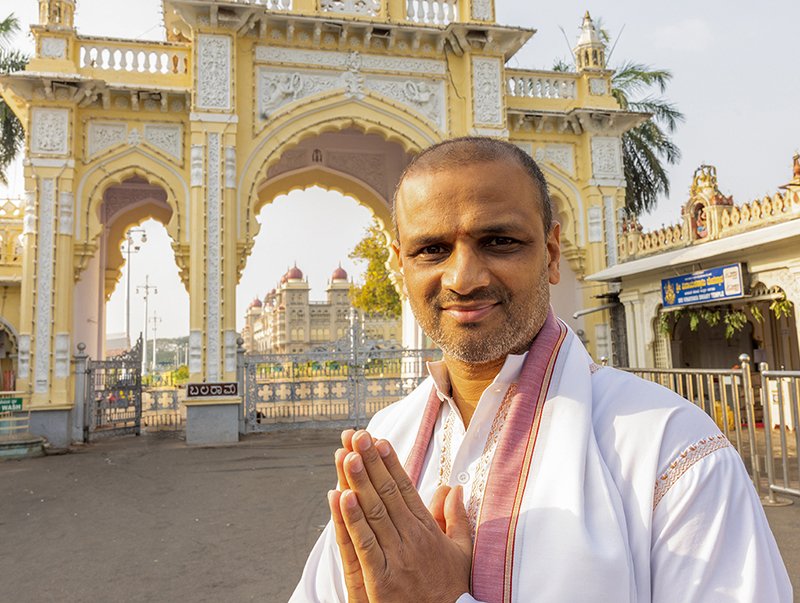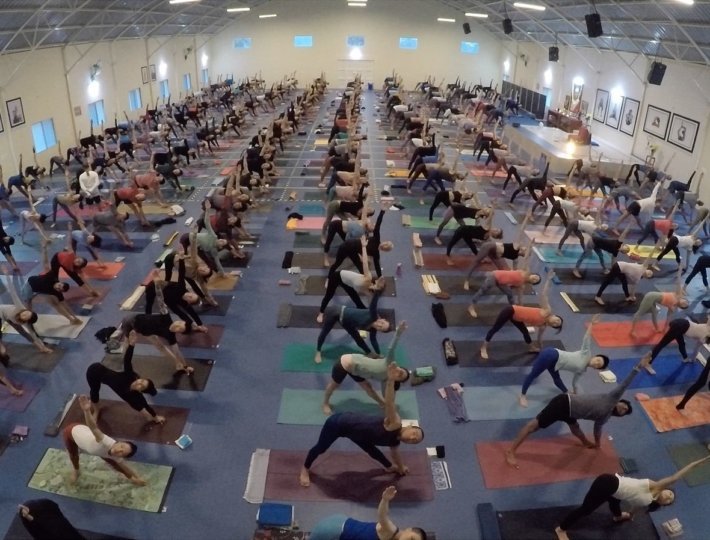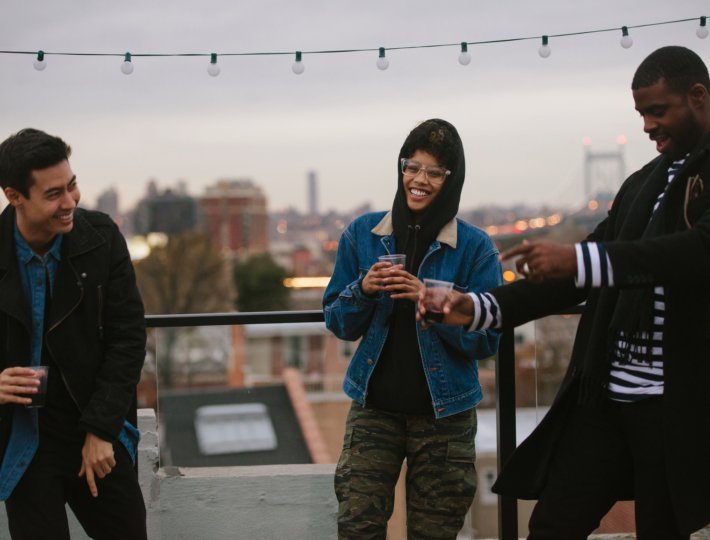In my writings and lectures, I often coach people to slow down, turn within, and listen to the whispers of their heart. Learning to hone intuition is extremely powerful, yet this effort is in vain if we are unable to follow the urgings we hear. If we want to live our dreams, hold authentic conversations, or establish deep, loving relationships, courage is essential.
Fear often poses a significant obstacle. Sometimes a loved one says something that hurts us and we’re afraid to speak up. Other times we may feel we deserve a raise at work but are scared to approach our boss. Or we may worry that particular personal characteristics—our religious beliefs, political opinions, sexual orientation, or quirky sense of humor—will lead to rejection if revealed. As a result, many of us hide in prisons of our own creation, afraid to reveal our most authentic selves. Afraid to speak our truth. Terrified to be who we truly are.
Early messages that we are unsafe lead us to begin hiding. I know all too well what this is like. When I was 11 years old, my family moved to New Orleans, Louisiana, several months into my 5th grade school year. Driving with my mom on an elevated highway towering over bayous, past shacks on stilts and Spanish-moss-adorned trees, I sensed we were entering a world quite different from my previous California and Colorado homes. As I entered a new school shortly before the holidays, I was eager to make friends and asked my teacher if I could make a presentation. She agreed, and I proudly shared the story of Hanukah with my new classmates, explaining the rules of playing dreidel and the tradition of lighting candles for eight nights. I was excited to be able to share something joyous from my cultural heritage and thought it might be fun for my classmates. However, as I looked out at the sea of faces, I could tell something was wrong. They didn’t seem to enjoy the presentation; in fact, they seemed quite unfriendly.
In coming weeks and months, I would learn that the school, which was about half white and half black, was divided rigidly along ethnic and religious lines. At Alice Birney Elementary School, you were either a white Catholic or a black Baptist. After this presentation, both groups felt I didn’t belong. Furthermore, my teacher in this public school gave regular fire and brimstone lectures. When she saw students get distracted, she would shout, “God sees your ignorance!” then approach a child, get close to her face, point a finger toward her nose and proclaim in a stern, gravelly voice, “The Devil is going to get you.” I found refuge with a small group my mom affectionately called the “outcasts,” including a Muslim and a Mormon. We enjoyed each other’s company but, for us, the school largely felt like a hostile environment.
While my physical safety was never threatened, this and other experiences seared a powerful message into my mind: It isn’t always safe to be who we truly are. For many years, when I arrived at other forks in the road—whether or not to share that I’m Jewish, whether or not to reveal my crush on a girl, or to share my vulnerable truths with those close to me—I felt terror wash over me. A primal message raged in my body: It wasn’t safe to be fully me, unless I was guaranteed acceptance. And, so, I often chose to hide.
Many of us have such experiences, whether it’s bullying, receiving criticism from a parent, or more obviously traumatic events. Regardless of the initial insult, the world slowly trains our wild, unabashed, carefree spirits that we’re not fully safe to be our pure and authentic selves.
The funny thing about memories is that some are easily accessible through conscious thinking, whereas traumatic events (whether life-threatening, “big T” trauma or smaller, yet personally significant “little t” trauma) are often encoded as “implicit memories,” stored beyond the veil of advanced cognitive thinking. These memories often lie dormant until an apparent or perceived threat arises. In later moments, they come roaring back to the surface. Then, when we stand at a threshold—when we’re invited to speak our truth but subconsciously feel unsafe doing so—we may be tempted to retreat back into the apparent “safety” of the cages we build for ourselves. Yet these self-constructed confines do nothing to protect. Instead, they trap us within the walls of what we think others deem acceptable, and they keep our lives small. They prevent us from spreading our wings and fully realizing our potential.
As Joseph Campbell, the legendary mythologist, said, “The privilege of a lifetime is being who you truly are.” Fear stands in the way of this for many of us. We fear rejection, failure, success, and financial ruin. We fear car accidents, break-ups, scary movies, getting the text message, and not getting the text message. While fear evolved to help keep us physically safe and sound, it has now come to a point wherein fear is triggered by many things we do, including numerous tasks that have no physical danger involved.
Succumbing to the grip of fear has real consequences. According to Bronnie Ware, a palliative care nurse and author of the book The Top Five Regrets of the Dying, her patients’ top lament during their final days was: “I wish I had had more courage to live a life that was true to me.” We see this in a variety of domains; according to a Gallup poll, up to 70% of Americans are unhappy at work and spend each day going to a job that feels unfulfilling. Others live in the closet for years and never experience the love they so desire. It may seem scary to take a leap, but isn’t it scarier to imagine reaching the end of your life realizing you never fully lived?
Related: What We Could Learn By Changing Our Perspective On Fear
Some spiritual teachers preach cultivating “fearlessness,” but I don’t subscribe to this philosophy. The word courage, in fact, doesn’t say anything about fear or the lack thereof. The word itself derives from the Latin root “cor,” which means “heart” (think “coeur” in French or “corazon” in Spanish). Indeed, courage describes living with our whole hearts. To live with courage is to be willing to feel all of our emotions, including fear.
Almost everything we want lies beyond the edge of our comfort zone. As Joseph Campbell said, “The cave you most fear to enter holds the treasure that you seek.” The job or relationship of our dreams often require us to step beyond where we feel most comfortable into the vast unknown. We may not know if we have what it takes to give the presentation before the board, to step into the role of manager, to share our difficult past with our lover. Yet the rewards we deeply desire require us to bravely move into this uncharted territory without guarantees.
I believe that fear can be our greatest friend because it’s often a sign that we’re getting closer to our dreams. Think about it: Are you more nervous before a date with someone you have no romantic interest in or someone you think may be your dream partner? How would you feel if you were preparing for an interview for a job that could positively alter the course of your entire life, or for a mediocre job that would barely pay your bills? Often that which we most fear is what our heart most desires. Though uncomfortable, fear can be a compass guiding us toward our True North. For this reason, we must learn to lean into fear, as long as it’s not a threat to life or limb, rather than run away from it. Understandably, this is often easier said than done. To help you take steps to live a life with courage, here are a few science- and experience-backed strategies.
Redefine F.E.A.R. Fear, in its purest form, is extremely adaptive. This powerful emotion evolved as a protective mechanism. Back when our ancestors were hunting and warding off saber-tooth tigers on the savannahs of Africa, the fight, flight, freeze response was essential to keep us alive. Yet today, most of the time, this same stress response is triggered in the absence of life-threatening circumstances. While fear and stress are helpful in short bursts, this chronic stress over physically-benign circumstances isn’t so helpful and can actually cause significant harm. Unfortunately, our nervous system doesn’t know the difference between a lion attack and a palm-sweating conversation with our boss.
In the absence of a threat to life or limb, fear is actually F.E.A.R.: “False evidence appearing real.” For example, I recently was heading to the airport when I got summoned for some urgent, last-minute work. After completing this, I hurriedly headed to the Manhattan streets to hail a taxi, only to see it was now rush hour and there were no available taxis to be found. After frantically searching for several minutes, I could feel my blood pressure climbing and my mind drawing a blank (one side effect of the stress response). Then, some small voice inside asked a simple question: Is this situation life-threatening? I almost had to laugh. While there were real consequences at stake (I was working early the next
morning and may have been late for work if I missed this evening flight), this was certainly not a life and death scenario. As soon as I asked myself that question, I saw this stress response for what it was—an over-active alarm from our evolutionary heritage—and I felt my entire nervous system relax. Several moments later, I saw an available taxi pull up and stop at the curb right in front of me. I hopped in and headed off to the airport with enough time to catch my flight.
Shift from story to sensations. False evidence can appear real when we’re living in our heads. Science shows that emotions can last only about two minutes without a story that fuels them. However, for many of us, when emotions arise in the form of uncomfortable sensations, we either distract ourselves (often with food, alcohol, or another substance) or retreat immediately into our heads. When we do the latter, we often swirl around in a stream of stories that fuel our current emotional state, making us feel even worse.
One of the fastest ways to move through and beyond fear is to shift focus from stories to sensations. As Thich Nhat Hanh, the noted Zen Buddhist monk, said, “The way out is through.” Whenever you’re feeling a strong emotion, I recommend following the instruction of my wonderful acting teacher Josh Pais, who has us say the words, “I’m back.” Try this now: Say “I’m back” either verbally or mentally to yourself. Then, take a deep breath, and shift your attention to the most prominent sensations in your body as well as the people or objects in front of you. Maybe it’s the feeling of your hands on your lap. Maybe it’s your feet on the floor. Maybe you’re feeling a tightening in your chest, a pounding of your heart, a closing off of your throat, if you’re feeling some anxiety right now. As we fully accept these sensations in our body, they shift. Each time you notice your mind start to create a new story, repeat this process and shift from the stories in your head to the sensations in your body, and notice what shifts.
Related: 9 Empowering Mantras to Shift Your Mindset
Strike a power pose. Amy Cuddy gave an amazing TED talk on how our body language actually changes our emotions, affects the way we feel, and can shift our level of confidence. One of the takeaway messages is that, as we shift our body language to “power poses,” we actually cultivate confidence within two minutes. One of these power poses is something called the “victory pose.” This is a pose people across different cultures (even people who are blind and have never seen anyone else do this pose), strike when in moments of victory, such as winning an athletic event. Bring your arms up in a v-formation, at a 60-degree angle to your head. Then tilt your head slightly back, look up, smile, and take long, deep breaths. Amy Cuddy found in her research that within two minutes of doing this or several other power poses, people actually have shifts in their biochemistry that lead to them feeling more confident and perform better on job interviews.
Shift from self to service. When we get caught up in how a situation affects us it’s easy to devolve into a spiral of our own neuroses. I find that when I shift from focusing on myself and cultivate a sense of service, I’m able to shift from fear to
love. It is written in the Christian Bible that “Perfect love casts out fear.” One powerful way to create “perfect love” is to seek to be of benefit to others, rather than focusing on how others can benefit us. If you find yourself mired in a fear, I recommend asking the simple question: How can I serve?
Related: A New Understanding of the Power of Compassion
Do one thing that scares you every single day. This maxim from Eleanor Roosevelt has a scientific basis: Small wins can help us build and maintain momentum. Just like a muscle, we can build and strengthen our courage over time. The best way to do this is to do at least one thing that scares you every single day. This can be something big like quitting your job or something tiny like complimenting someone or introducing yourself to a new person. No matter what this is for you, following this advice will enhance your ability to lean into fear, push the edge of your current comfort zone, and move closer to your heart’s deepest desires.









Comments (2)